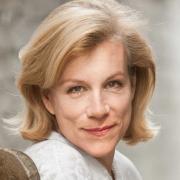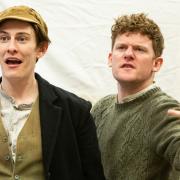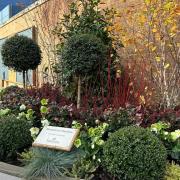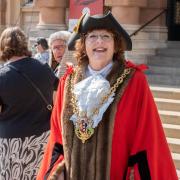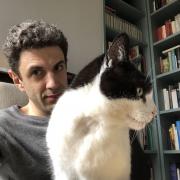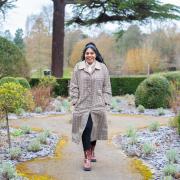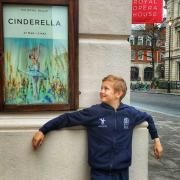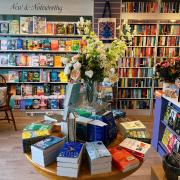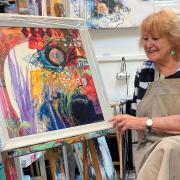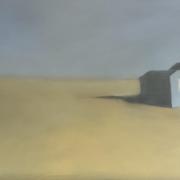Anthropologist Charles Partridge knew the key to understanding Suffolk's ancient past lay in revealing the stories locked up in the county's churches. He made it his life's work to reveal them
Once upon a time, in every Suffolk church, in every Suffolk parish, resided an ancient 'hutch' - a chest - carved from aged oak, with iron hinges, and no fewer than three heavy locks, each with its own key in the possession of three separate people.
The chests held parish records, manuscripts written in a cursive, old style hand that told tales of the past. There were titled deeds, proceedings of medieval guilds and, sometimes, records of people who were baptised, married, or buried in graves surrounding the church. At various times statutory requirements were introduced as to the properties of these chests.

But as time went they were treated with indifference, the contents destroyed, the chests used as scrap, their decorative brasses, plate and painted glass pilfered. Some keys were hopelessly lost many years before. Yet the documents the chests held were more valuable than any sparkling treasure and the time came when they were rescued from their dusty, neglected homes, to be pored over by curious historians and genealogists, particularly Charles Stanley Partridge.


Charles Partridge was born on February 10, 1872 to Charles Thomas Partridge and Catherine Pleasance Hewitt, at Offton Place, Offton, a few miles north-west of Ipswich. The Partridges were wealthy yeoman farmers who were originally seated at Shelley Hall near Hadleigh. Charles was baptised there in December 1872. His father was a timber and slate merchant and by 1881, the family was living at 20 Tavern Street, Stowmarket, with a governess and three household servants.
Charles was educated at Queen Elizabeth School in Ipswich (now Ipswich School), where he was a younger contemporary of writer Henry Rider-Haggard (King Edward's Ring), and Christs College, Cambridge, where he gained a BA in theology in 1895. He joined the Colonial Service and in 1901 was appointed district commissioner in southern Nigeria at Ikot Expene, beginning a decade-long career in African politics. With no previous knowledge or experience of the country's culture, history and language, he was now in charge of hundreds of square miles and thousands of people. Despite this, he established good relationships with the locals and wrote a book, Cross River Natives: notes on the primitive pagans of Obubura District, published in 1905. He also collected wooden carvings, historic artefacts of traditional African crafts, and items of clothing, basketware and pottery.
Through his interest in humanities Charles became a Fellow of the Royal Geographical Society in 1903 and a Fellow of the Society of Antiquities in 1904. Distance was no barrier to his continued efforts in discovering Suffolk's past and he became a member of the Suffolk Institute of Archaeology and History, serving on the committee and as a delegate to the institute's 15th congress, when among the subjects being discussed was the preservation and scheduling of local records. The ambition was to open the hutches, the parish chests containing ancient manorial court rolls and other historical deeds, so they could be preserved and protected. It was said the history of Suffolk had never been written because of lack of available material. Yet, after further investigation, it seemed Suffolk had an enormous collection of manuscripts - more than 30,000 in the British Museum, and still more languishing in university libraries.

With permission from church wardens, the committee organised visits to each parish to recover documents and lodge them in the institute's libraries or Ipswich Museum. In 1906, Charles contacted every parish in Suffolk asking if they could kindly copy the inscriptions on all their memorials and gravestones and send them to the institute for preservation. Sadly, only 15 replies were ever received.
Back in Nigeria, Charles befriended Mary Slessor, a Scottish Presbyterian missionary known for promoting women’s rights and for stopping the common practice of infanticide of twins in Okoyong, an area of Cross River State. The unusually matched pair became avid pen pals and after Mary's death Charles remarked, “... she was a very remarkable woman. I look back on her friendship with reverence - one of my greatest honours that hath befallen me and I had a superstitious feeling that she was and still is my guardian angel (I have been seized by cannibals, thrice shipwrecked). The belief exists, despite of my being agnostic and non-religious. Excepting Miss Slessor, I thoroughly disapprove of all missionaries”.

Charles left Africa in 1915 to serve in the First World War in Greece and Italy as a Railway Transport Officer, and in India. After the war he returned to Suffolk and enthusiastically took up his work in local history and genealogy, cultivating a network of professionals which included poet, prehistorian, archaeologist and antiquarian Nina Layard. With his friends and fellow historians, Prince Frederick Dalip Singh, younger son of Sir Duleep Singh, the last Maharaja of the Sikh Empire, and Rev Edmund Farrer, of Botesdale, he worked tirelessly to complete Portraits in Suffolk Houses. In 1912-1913, he produced Suffolk churchyard inscriptions, copied from the Darby transcription, a transcription of every standing monument in graveyards and churches across Suffolk.
He undertook extensive research into local families, including his own, and was founder and editor of The Suffolk Miscellany, a genealogical and local historical journal, and editor of East Anglian Notes. From 1919 to 1927, he contributed a series of articles to the East Anglian Daily Times under the name 'Silly Suffolk' (from the Old English word sælig meaning blessed). In 1928 Charles donated more than 300 carved figures collected from the Cross River Area of Nigeria, and his carefully recorded notes describing the discovery of sacred places of the local tribes strewn with human skulls.
In 1950 Charles donated his letters from Mary Slessor, and a recording of her voice, to the Glasgow record office. His own extensive collections, meticulously organised, he donated to Ipswich Public Library - 387 files and 28 foolscap volumes of Suffolk pedigrees and notes. They're now held at Suffolk Archives (Suffolk Record Office) as part of the local studies collection.
Charles died on December 21, 1955 at Tavern Street, Stowmarket, and was laid to rest in Shelley churchyard. In his obituary in The Times (January 10, 1956) a friend remembered Charles as “a born scholar with an excellent memory, broad interests, exact knowledge, a love of truth and a dislike of pomposity inaccuracy and humbug".
Abi Pullen-Game is a genealogist and author of Past Origins of East Anglia: the tales history forgot. You can find her on Facebook




